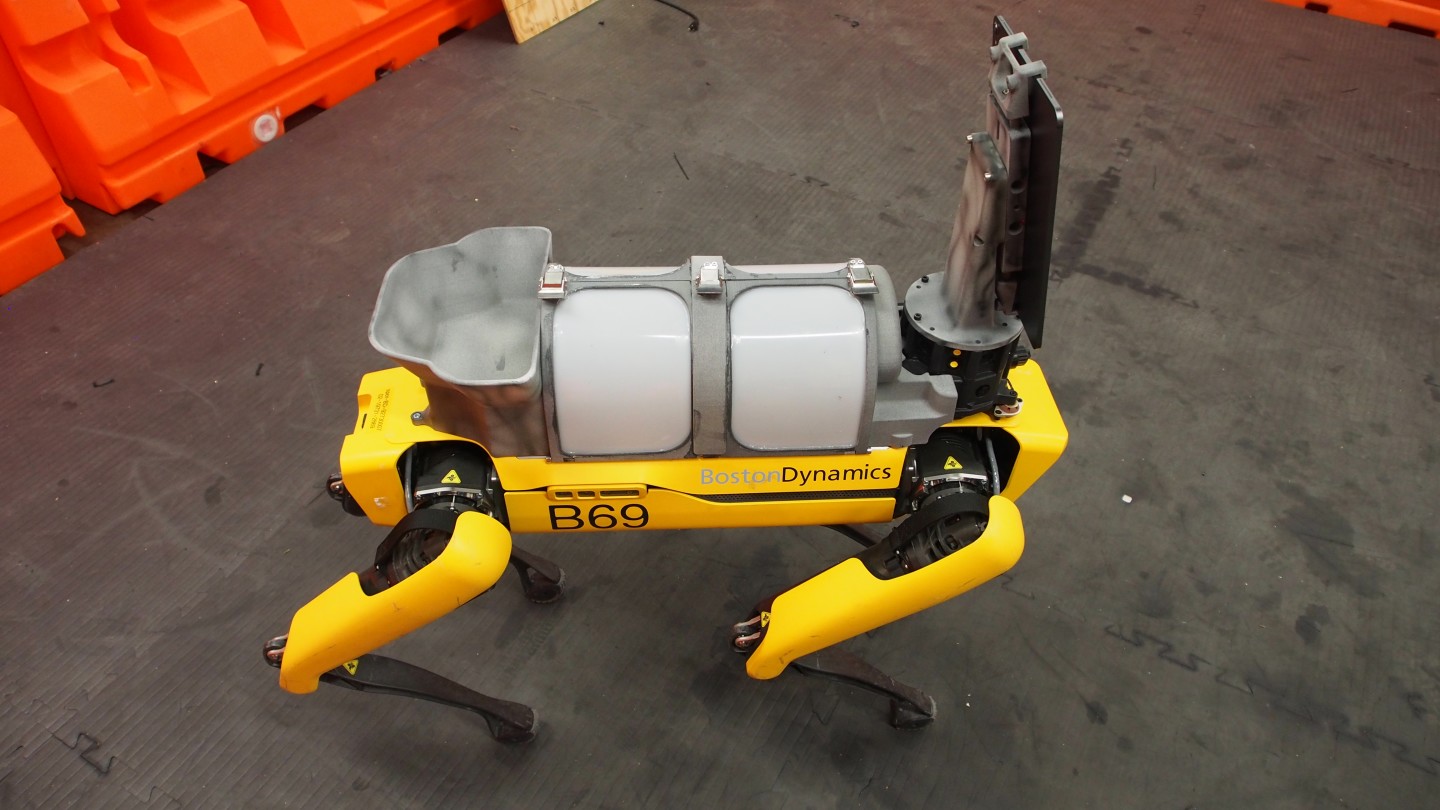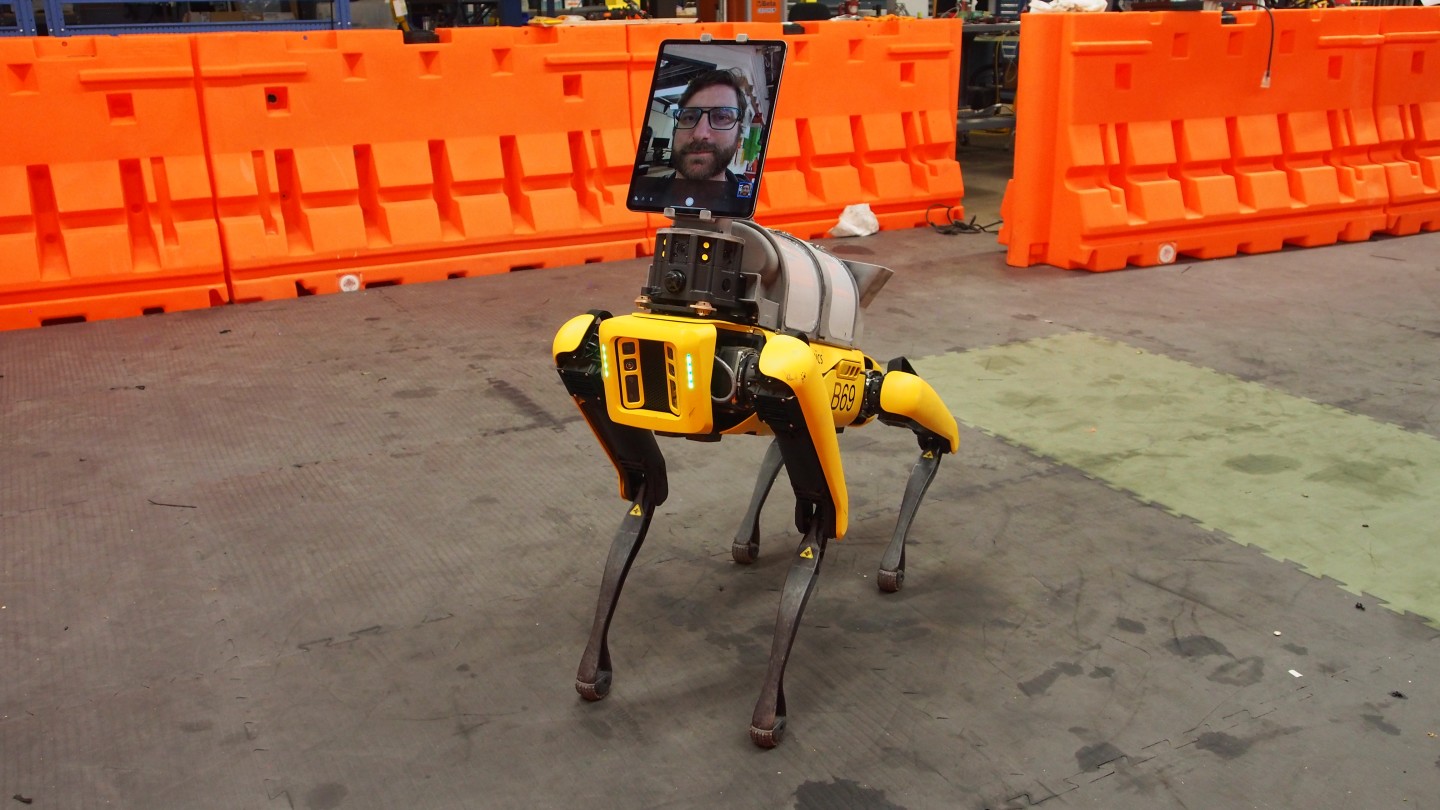For years we have witnessed Boston Dynamics develop increasingly sophisticated robots, and while they are undoubtedly impressive engineering marvels, the question of what could they be used for was often raised. Now, the company has revealed its Spot robot is being deployed in hospitals to protect frontline healthcare workers from COVID-19.
For well over a decade Boston Dynamics has been refining its dog-like Spot robot, occasionally releasing cute videos showing it dancing or pulling trucks. As the company moves towards commercializing its robots, we have seen several potential uses recently demonstrated, from inspecting building sites to working on oil rigs.
Now the company has revealed that over the past couple of months it has been working on turning Spot into a mobile healthcare worker. And, it has already been interfacing between doctors and patients in a Boston hospital for several weeks.
“Starting in early March, Boston Dynamics started receiving inquiries from hospitals asking if our robots could help minimize their staff’s exposure to COVID-19,” the company writes in a blog post. “One of the hospitals that we spoke to shared that, within a week, a sixth of their staff had contracted COVID-19 and that they were looking into using robots to take more of their staff out of range of the novel virus.”

Boston Dynamics
The initial deployment has been relatively simplistic, adding custom designed mounts to Spot turning it into a mobile telemedicine platform. The iPad mount, with a two-way radio, allows doctors to remotely triage patients as they approach the hospital.
Boston Dynamics is clear that this initial system is not reliant on any specific hardware or software relating to its Spot robots. In fact, the company suggests other simple wheeled robotic systems may be more suitable for this particular task. All the documentation relating to mobile robotics applications during the pandemic is being publicly released by Boston Dynamics through the open-source repository GitHub.
Several future robotic applications are currently being worked on by the company to expand the functionality of this kind of remote patient treatment. The next steps are to find ways to remotely measure body temperature, respiratory and pulse rates, and oxygen saturation.
“We have been in dialogue with researchers who use thermal camera technology to measure body temperature and calculate respiratory rate,” the company writes. “We’ve also applied externally-developed logic to externally-mounted RGB cameras to capture changes in blood vessel contraction to measure pulse rate. We are evaluating methods for measuring oxygen saturation.”
The company is also investigating mobile robotic technology that can aid in the disinfection or decontamination of spaces or surfaces. Propositions include using UV-C light to disinfect hospital rooms.

Boston Dynamics
“We hope our fellow mobile robot providers, existing customers, and medical professionals will be able to use this information to leverage mobile robots to take people out of harm’s way during this critical time,” the company concludes. “Together, we can improve conditions for healthcare workers and essential personnel around the world, save lives, and fight COVID-19.”
Source: Boston Dynamics
Source of Article